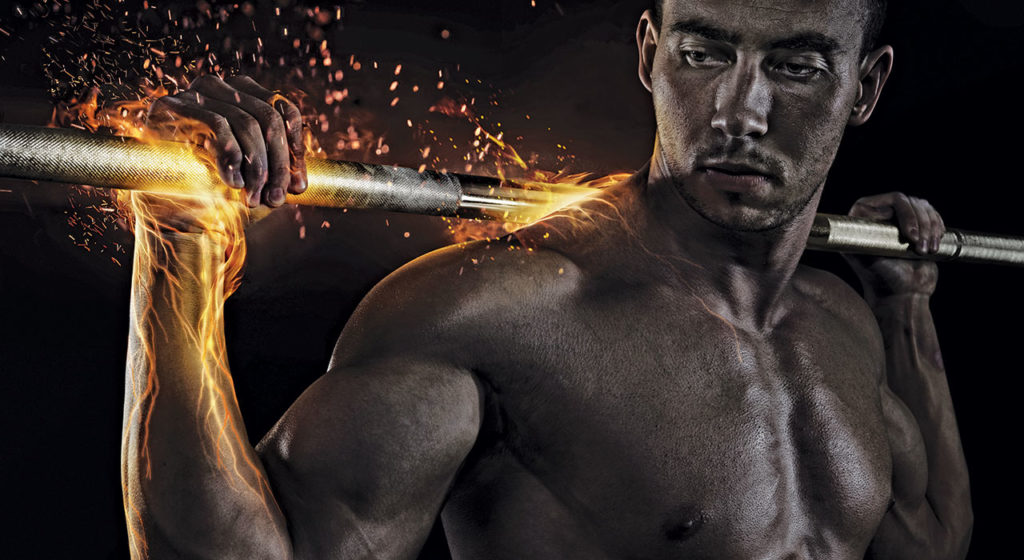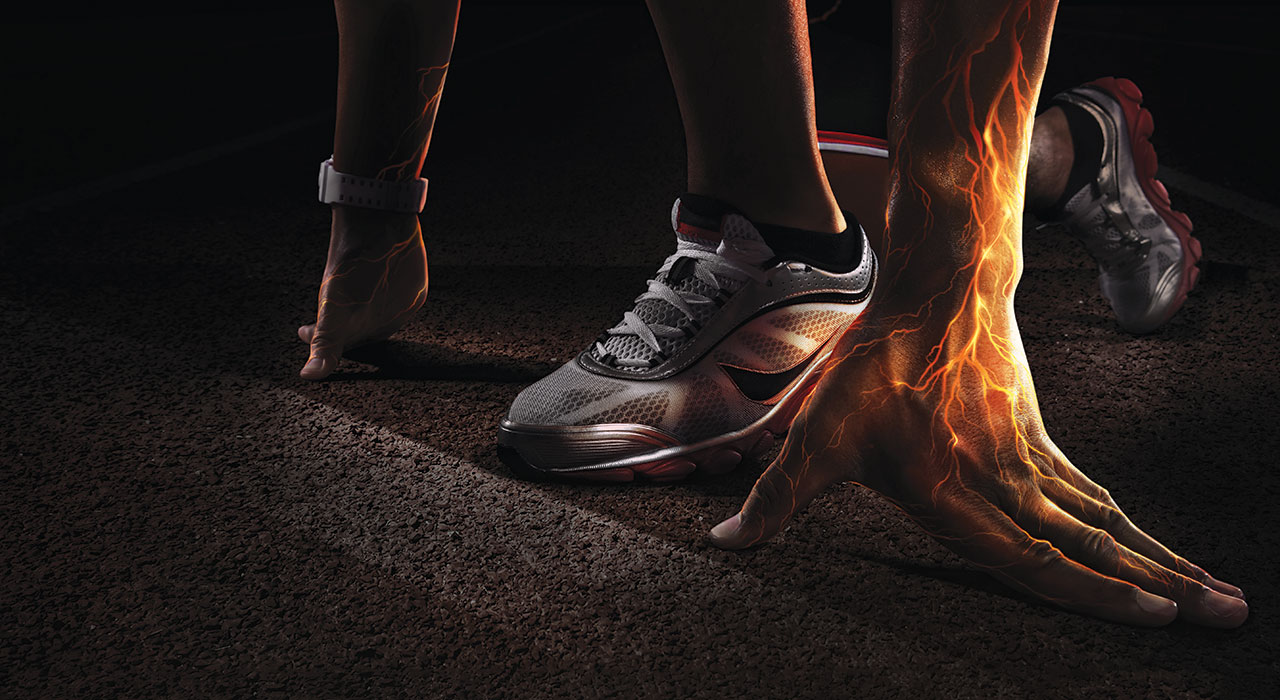Increase your pace using these strength training workouts designed to make you a better sportsman than you were last month.
Athletes want to know if they are performing the right exercises, how often they should train and how much they should lift. These are all legit questions, however strength training and workouts for speed are more complicated than that, and certainly include more than simply lifting weights in the gym.
Everyone within the sporting world would like to be faster, whether it’s athletes on the track, soccer players on the pitch or basketballers on the court. All sports professionals can benefit and increase their sporting performance by having this ability, and this means it’s important to understand what training procedures you need in place to allow for optimal adaptation of speed.
In this article, we will look at different types of strength training and why each is beneficial for increasing speed.
What’s your training age
When we speak about an athlete’s training age, we are not referring to the age of the athlete, but rather how long they have been training for. So, if we had an athlete who started training at the age of 18 and they’re now 21, their training age is three.
| STAGE | TIME TRAINING (YEARS) |
|---|---|
| Beginner | Less than 1.5 |
| Intermediate | Between 1.5 and 3 |
| Advanced | More than 3 |
Therefore, a younger athlete can be classed as having an older training age than another athlete who is older in years. The determining factor is the level of experience. An athlete’s actual age is still important, and needs to be considered when selecting exercise frequency, intensity, time and type. When designing a strength-training program, it’s important to determine an athlete’s training age before you start putting pieces of the program together, as this information will heavily influence it.
Athletes with varying levels of experience are unlikely to both benefit from doing the same session. The appropriate training for the beginner may seem tedious for the more experienced athlete, and may be unable to cause enough stress to produce positive adaptations. Likewise, a beginner performing workouts suited for advanced athletes could be too challenged, and you run the risk of burnout or injury.
– RELATED: How to Build Muscle For Beginners – The Complete Training Guide –
Developing maximum strength
Maximum strength training increases relative strength and is what’s often called the athlete’s “base strength”. This involves the athlete working at submaximal efforts which will help prepare the body for more intense, explosive training later on in the season by developing muscle and connective tissue tolerance.
The length of this period of training will vary for athletes depending on their training age. If you are a beginner, this stage is often longer as you need more time to build your strength (develop your base strength), whereas advanced level athletes will be able to progress quicker and begin to focus more on exercises with more sport specific transfer.
This stage is usually carried out pre-season or during the early stages of a season. However, if you are new to resistance training, then it’s best to start off with a maximum strength program. There’s no point trying to attempt more explosive exercises if you can’t perform technically sound max-strength exercises, such as the barbell back squat and the deadlift.
This stage of the training is highly associated with hypertrophic (muscle) gains and will prepare you for more explosive work. The advantageous effect of this may depend on your sport (a football player may wish to increase their mass, however a 200m sprinter will want to stay lean). If an athlete comes in a bit heavy after this stage, coaches and athletes usually spend some time adjusting
this in the next phase.
The type of exercises that you need to include during this phase are multi-joint compound movements. When performing, you should focus on keeping the eccentric phase of the lift slow and controlled. The concentric phase of the lift should be performed quicker with force. This is most favorable to the rate of force development. As you begin to improve and have a good structural balance, increase the weight used for each exercise. Make sure you perform all exercises with a good technique and in a safe manner. Never compensate form to increase the weight.
Harnessing your explosive strength
Although maximum strength is an important aspect of an athlete’s training, when looking to improve your sprinting ability, or even a short burst of pace, it’s important to focus on applying force rapidly, rather than focusing on the maximum amount of force that you can supply. Explosive exercises are highly used during strength training to increase speed as they require the athlete to perform accelerated actions. This requires the athlete to continue accelerating throughout the movement until the point of release or take off.
During this stage, athletes are able to improve their power production through using explosive movements under heavy loads. Due to the heavy loads moved and high speed, training facilitates a higher threshold of motor units. These exercises have a higher muscle activation, force, power and concentric velocity than the previous maximum strength exercises. Remember that before attempting the exercises in this phase, it’s important you have a good base strength and sound technique. Don’t start performing exercises such as the clean or snatch if you cannot execute a near perfect squat or deadlift. The exercises here are technically more demanding so it’s even more important that you’re able to perform them correctly to avoid injury.
Reactive strength
During your training, reactive strength will come in a little later, but will actually crossover with our explosive training (for example, Mon: explosive strength, Thurs: reactive strength). At this point it’s unlikely that we’ll be performing any maximum strength sessions (unless the athlete is a beginner).
Your reactive strength sessions emphasize movements and exercises that most closely resemble sprinting with the focus being on minimal ground contact time. These exercises will have the highest carryover into your sprinting performances on the track, field or court. With theses exercises we are trying to mimic the force-velocity and movement pattern characteristics of sprinting. You can achieve this through using training aids such as weighted vests, sleds and medicine balls.
Plyometrics
One way to employ this training is through plyometric drills. These drills mostly involve performing bodyweight jumping exercises and are a great way for you to increase your power. Again, these exercises have direct crossover to your sporting performance as you are learning to exert maximum force in the minimum amount of time. Plyometric training is usually performed at high intensities and is not always suitable for an athlete.
Suitability will depend on training age, ability and fitness levels. There are, however, lower intensity exercises that can be performed as an introduction to plyometrics for beginners. It’s important that you select the correct type of exercises for your program. Some of these can be stressful on the nervous and skeletal system and should only be performed by well conditioned athletes. If you’re untrained, return to the phase 1 max strength exercises before plyometric training. When performing these exercises these are the best practices:
- You only want to produce high quality reps, performed with maximal effort. If the quality of the reps diminishes then stop with the sets.
- Each must have maximal effort for all explosive movements.
- Make sure exercises performed allow for minimum contact time with the ground.
- Bounding and jumping exercises can be especially stressful for your shins. Perform plyo exercises on a soft surface, sprung floor or grass. Don’t pick up any unnecessary injuries.
Best examples of maximum strength training exercises
- Back squat
- Front squat
- Deadlift
- Nordic curls
- Lunge
- Swiss ball hamstring curl
Best examples of explosive strength training exercises
- Power clean
- Snatch
- Squat jump
- Medicine ball toss
- Box jump
- Standing long jump
Best examples of reactive strength training excercises
- Low hurdle jumps with bounce
- Hops
- Sprint bounding
- Vest sprints
- Clap push-ups

What to do
The following workouts should be completed in phases in the order. Each phase should be performed for around 6-8 weeks. This also depends on the sport you do because a track sprinter, for example, can break the phases up into pre-season, mid-season and competition phase. Reactive strength training has the most transfer into sprinting and therefore the most sport specific type of strength training so is performed later in the season. Maximum strength training is more fatiguing on the muscles so is performed first or mainly pre-season to build strength and prepare. The theory is the same, but the length will vary from sport to sport and depend on the athlete’s experience. The training is applicable at any point for exercisers who want to start implementing straight away because beginners can start maximum strength training at any point during their sporting calendar.
| EXERCISE | SETS/REPS | REST | INTENSITY |
|---|---|---|---|
| Barbell back squat | 4 x 6-8 | 2 mins | 8RM |
| Barbell bench press | 4 x 6-8 | 2 mins | 8RM |
| Deadlift | 4 x 6-8 | 2 mins | 8RM |
| Pull up | 4 x 6-8 | 2 mins | 8RM |
| Military press | 4 x 6-8 | 2 mins | 8RM |
| EXERCISE | SETS/REPS | REST | INTENSITY |
|---|---|---|---|
| Power clean | 3 x 3-4 | 3 mins | 70% 1RM |
| Snatch | 4 x 5 | 2 mins | 7RM |
| Squat jump | 4 x 5 | 2 mins | 5% BW |
| Medicine ball toss | 4 x 6 | 2 mins | 10KG |
| Plank | 4 x 1 min | 1 min | BW |
| EXERCISE | SETS/REPS | REST | INTENSITY |
|---|---|---|---|
| Box-to-box jumps | 3 x 6 | 2 mins | BW |
| Sled sprints | 6 x 2 | 6 mins | 10% BW |
| Explosive step-ups | 4 x 6 | 2 mins | 5% BW |
TRAINER: Liam Coultman is a sprint and conditioning coach, and PICP Athlete Performance Specialist. He’s currently located at the National Performance Centre for Athletes in Spain. thespeedproject.com







